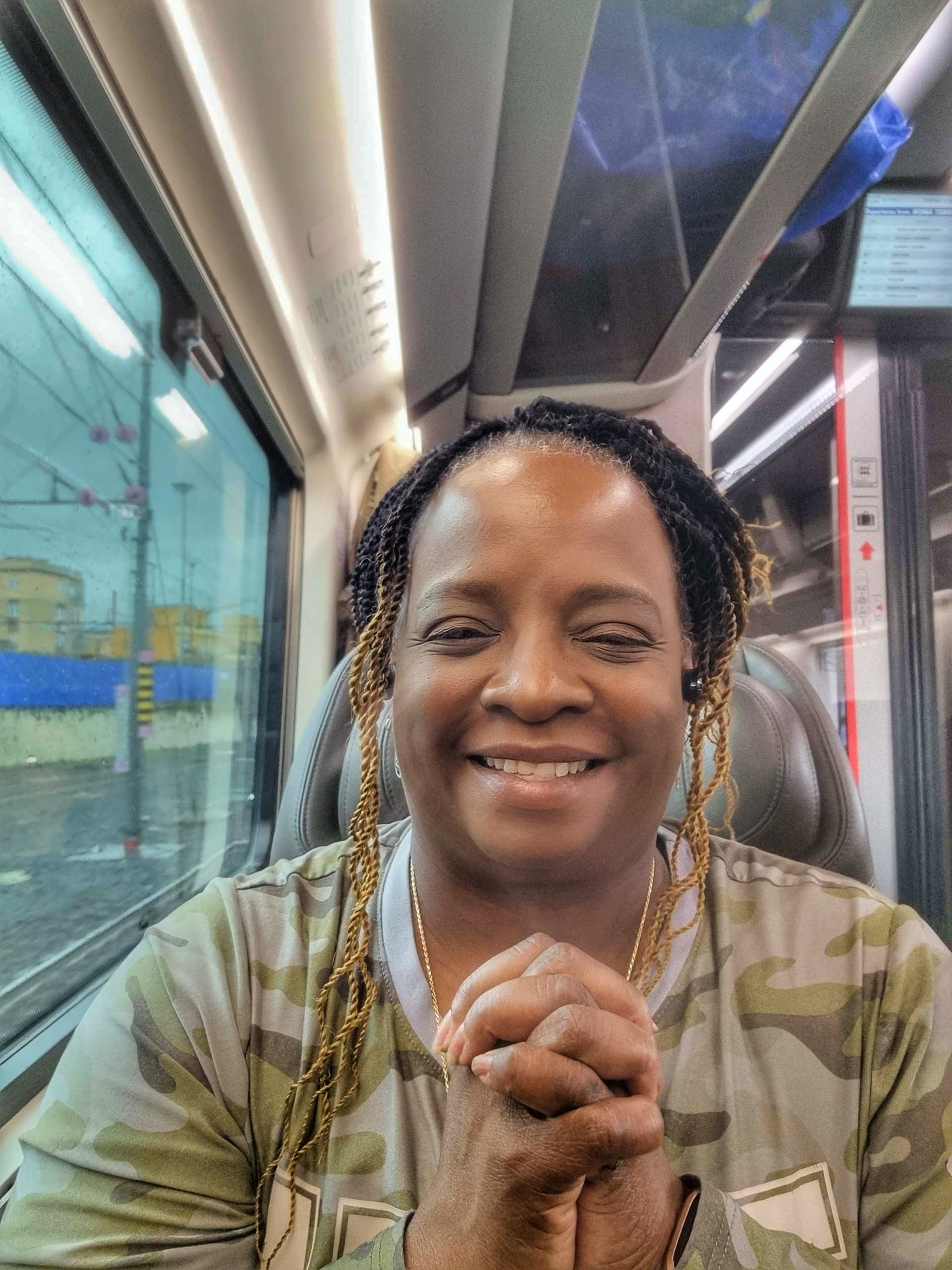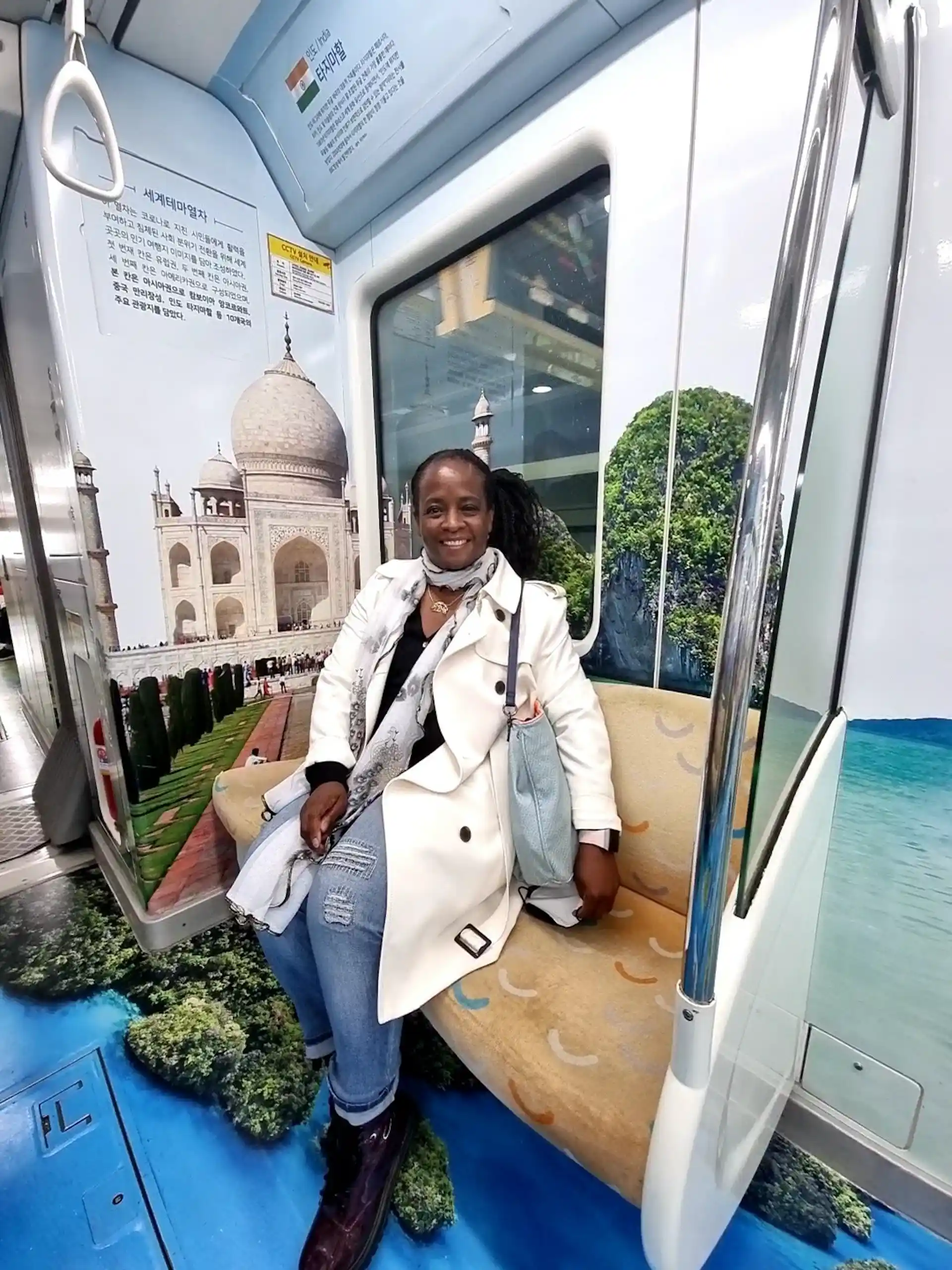|
Getting your Trinity Audio player ready...
|
How to Navigate the Deutsche Bahn: A Complete Guide to German Trains
Train travel is more than just a way to get from point A to point B—it’s a chance to immerse yourself in the journey. In Germany, the Deutsche Bahn (DB) offers a fast, reliable, and scenic way to explore the country and beyond. Whether you’re gliding past medieval towns or relaxing with a coffee in your seat, taking the train can make your trip more enjoyable and less stressful than flying or driving. If you’re planning to explore Germany, knowing how to navigate the Deutsche Bahn will make your experience smooth and even more rewarding.
Table of Contents
- How to Navigate the Deutsche Bahn: A Complete Guide to German Trains
- German Rail Passes
- The ICE Train or InterCityExpress
- Step-by-Step Guide to Purchasing Deutsche Bahn Tickets
- Dealing with Luggage on Deutsche Bahn Trains
- Traveling with Bicycles or Large Sports Equipment
- Accessibility for Passengers with Disabilities
- The Großraumwagen
- Overnight Travel on Sleeper Trains
- Tips for First-Time Riders on Deutsche Bahn
- Bahnhof, Timetables, and Ausgang
- Like it. Pin it.



How to Navigate the Deutsche Bahn
Considering a train journey? Excellent choice! Europe, especially Germany, relies heavily on train travel. The Deutsche Bahn (DB), also called “Die Bahn,” is the primary passenger rail system, operating over 29,000 trains daily.
The Deutsche Bahn transports over 4.5 million people daily, serving more than 5,500 stations. Its extensive network covers 35,000 km of track. Formerly a government corporation, Deutsche Bahn is now fully privatized.
German Rail Passes
Deutsche Bahn offers various ticket types and special deals, including tourist passes that pay off after a few long-distance trips. The most popular option is the GermanRail Pass, which offers unlimited travel for 4 to 10 days within a month. The GermanRail TwinPass is available at a discount for two travelers.
Under 26 Years Old
The Youth Pass is perfect for travelers under 26, offering unlimited travel for one month. Additional passes, such as fly-and-ride or student options, are available. Check bahn.com for more information.
The ICE Train or InterCityExpress
The ICE (InterCityExpress) trains can reach up to 250 km/h, offering fast connections between major cities. Though seats are usually easy to find, reservations are recommended, especially on busy routes. Look for a bold “R” on schedules to see if reservations are required.
Step-by-Step Guide to Purchasing Deutsche Bahn Tickets
Start by deciding on your route and travel dates. Whether you’re traveling across Germany or connecting to another European country, Deutsche Bahn’s extensive network has you covered. Make sure to double-check public holidays, as trains may be more crowded on those days.
Visit the Deutsche Bahn Website or Use the DB Navigator App
The easiest way to purchase your ticket is through the official Deutsche Bahn website (bahn.com) or the DB Navigator app, available for both Android and iOS. Both platforms offer an English option, making it easy for international travelers.
Enter Your Travel Details
Once on the site or app, enter your departure and arrival stations, along with your preferred travel date and time. If you’re flexible, the system will show you various options, including earlier or later trains, which may offer better prices.
Select Your Train Type
For regional or local travel: Use the RE for medium-distance journeys and the RB for short, local trips to smaller towns and villages.
For long-distance, cross-country trips: The ICE is the best choice for its speed and comfort. You’ll cover large distances quickly while enjoying top-notch amenities.
For mid-range travel between cities: Choose the IC for comfort at a slightly slower pace or the EC if you’re crossing into another country.
Choose Your Ticket Class
Next, select between first-class or second-class tickets. First class offers more spacious seating, complimentary snacks, and quieter compartments, while second class is more affordable and still comfortable.
Make a Seat Reservation (Optional)
On many routes, especially during peak times or on ICE trains, it’s a good idea to reserve a seat. You’ll be prompted to reserve a seat during the booking process, with options to choose between window or aisle seating, and family compartments if you’re traveling with children.
Review Fares and Special Offers
Deutsche Bahn offers various fares, including the “Super Sparpreis” (lowest fare but non-refundable) and “Flexpreis” (fully refundable). If you’re planning multiple trips, consider passes like the GermanRail Pass or regional day tickets for better value. Check for any special deals or discounts.
Enter Passenger Information
Once you’ve selected your train, enter your passenger details, including name and contact information. For group bookings, make sure to include details for all travelers.
Choose Your Payment Method
Deutsche Bahn accepts major credit cards, PayPal, and other payment methods. After entering your payment details, review your booking to ensure everything is correct.
Receive and Print Your Ticket
After payment, you’ll receive an email confirmation with your ticket attached as a PDF. You can either print the ticket or download it to your phone for easy access. If using the DB Navigator app, your ticket will automatically be available in the app for easy scanning onboard.
Dealing with Luggage on Deutsche Bahn Trains
Deutsche Bahn allows you to bring as much luggage as you can carry, with no strict limits. Store smaller bags on overhead racks or under your seat, and use larger compartments at the ends of train cars for suitcases. Keep valuables with you, and consider using a lock if storing bags out of view. Most major stations offer luggage lockers for temporary storage, but plan extra time in smaller stations without elevators. Traveling light makes boarding easier, especially since trains only stop for a few minutes at each station.
Traveling with Bicycles or Large Sports Equipment
If you’re planning to explore Germany by bike or carrying large sports equipment, Deutsche Bahn offers convenient options. Most long-distance trains, including ICE and IC, have designated bike spaces that can be reserved in advance. You can easily book a bike ticket when purchasing your travel ticket online or through the DB Navigator app. Regional trains (RE and RB) also accommodate bikes, usually without a reservation, but be aware that during peak hours, space can be limited. For larger sports equipment like skis or surfboards, it’s best to check with Deutsche Bahn ahead of time, as storage options may vary by train type. Always ensure your items are securely stowed in the luggage compartments.
Accessibility for Passengers with Disabilities
Deutsche Bahn is committed to making train travel accessible for passengers with disabilities or mobility challenges. Many stations and trains are equipped with ramps, elevators, and designated seating areas for wheelchair users. When booking your trip, you can request assistance for boarding, navigating the station, or switching trains. For longer journeys, it’s a good idea to notify Deutsche Bahn ahead of time to ensure assistance is available at your departure and arrival stations. Accessible toilets are available on most ICE and IC trains, and station staff can also assist with luggage if needed. The DB Navigator app and website provide additional accessibility information, making it easier to plan your journey.
The Großraumwagen
The Großraumwagen is an open coach car with a range of seating configurations. When reserving seats, you can choose between smoking or non-smoking, as well as window, aisle, or table seats. Don’t forget to specify your preferences when booking!
Overnight Travel on Sleeper Trains
For those looking to travel overnight, Deutsche Bahn offers sleeper and couchette cars on its night trains (often labeled as IC or EC for international routes). Sleeper compartments can accommodate two to six people, offering fold-out bunks, pillows, and blankets. Some sleeper trains even offer private compartments with en-suite bathrooms for added comfort. Booking an overnight train saves time and money by eliminating the need for a hotel stay. For a restful experience, pack earplugs, a sleep mask, and water. It’s also a good idea to reserve your sleeper car well in advance, as space can fill up quickly, especially during holiday seasons.

Tips for First-Time Riders on Deutsche Bahn
- Arrive Early
German trains are known for being punctual. Arriving 15-20 minutes early gives you time to navigate the station and find your platform without rushing. - Download the DB Navigator App
This app is essential for real-time updates on schedules, delays, and platform changes. It also stores your ticket digitally, making your journey smoother. - Validate Regional Tickets
If you’re using a regional ticket, make sure to validate it at the small blue machines before boarding. This avoids fines and ensures your ticket is valid. - Keep Your Ticket Handy
Conductors will check your ticket shortly after departure. Have it ready, whether it’s printed or digital, so you don’t have to search for it on the train. - Be Ready to Board Quickly
Trains don’t stay at the station for long, especially at smaller stops. Be prepared to board right away to avoid missing your train.
Bahnhof, Timetables, and Ausgang
The German word for train station is Bahnhof, with Hauptbahnhof referring to the central station. Larger stations offer amenities like restaurants, shops, and luggage storage, making them convenient stops. Timetables, posted throughout the station, use a 24-hour clock, with yellow charts showing departures and white charts showing arrivals. Electronic boards help you find your platform and track number. When leaving, follow the “Ausgang” (exit) signs, and if connecting to another train, check the timetables or boards for your next platform. Train travel in Germany is easy, efficient, and designed for a smooth journey.



FAQs About Riding the Deutsche Bahn
1. What should I do if I miss my train?
If you miss your train, don’t panic! For flexible tickets, you can take the next available train on the same route. If your ticket is non-flexible, you may need to buy a new one. Always check with station staff or use the DB Navigator app to find your options.
2. How early should I arrive at the station?
Arriving 15-20 minutes before your train’s departure is recommended. This gives you enough time to find your platform, especially in larger stations or if you’re unfamiliar with the station layout.
3. Can I bring food and drinks on the train?
Yes, you’re welcome to bring your own food and drinks on the train. Long-distance trains like ICE also have dining cars and snack services onboard.
4. Do I need to reserve a seat?
Seat reservations are optional on most trains, but highly recommended on busy routes or during peak travel times. On some trains, such as the ICE, seat reservations can ensure you have a comfortable spot, especially on Fridays, Sundays, and holidays.
5. Is Wi-Fi available on Deutsche Bahn trains?
Wi-Fi is available on most ICE trains and some IC trains, especially on long-distance routes. It’s free, but the connection quality may vary depending on your location.
6. Can I travel with pets on Deutsche Bahn?
Small pets can travel for free in a carrier, while larger dogs require a half-price ticket. Pets are allowed on most trains, but they must be leashed and may not sit on the seats.
7. What if my train is delayed?
If your train is delayed, Deutsche Bahn usually allows you to take the next available train. In some cases, you may be entitled to compensation for significant delays, which can be applied for online.
Like it. Pin it.

This post contains sponsored and/or affiliate links, and I earn a commission at no extra cost to you. I appreciate your support and stand by my views. Thank you for reading this post. Don't forget to subscribe!
Discover more from Duffel Bag Spouse Travels
Subscribe to get the latest posts sent to your email.





